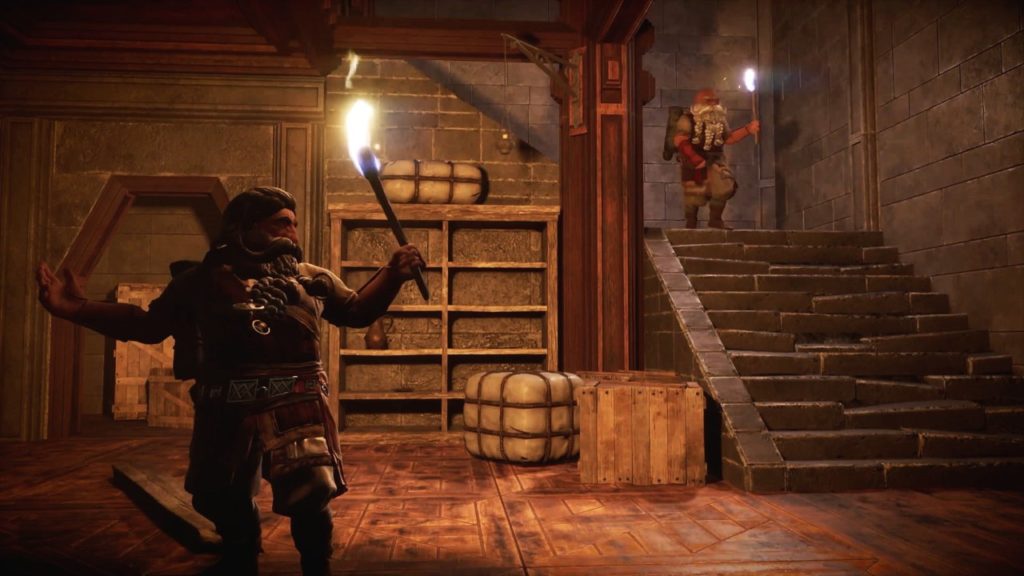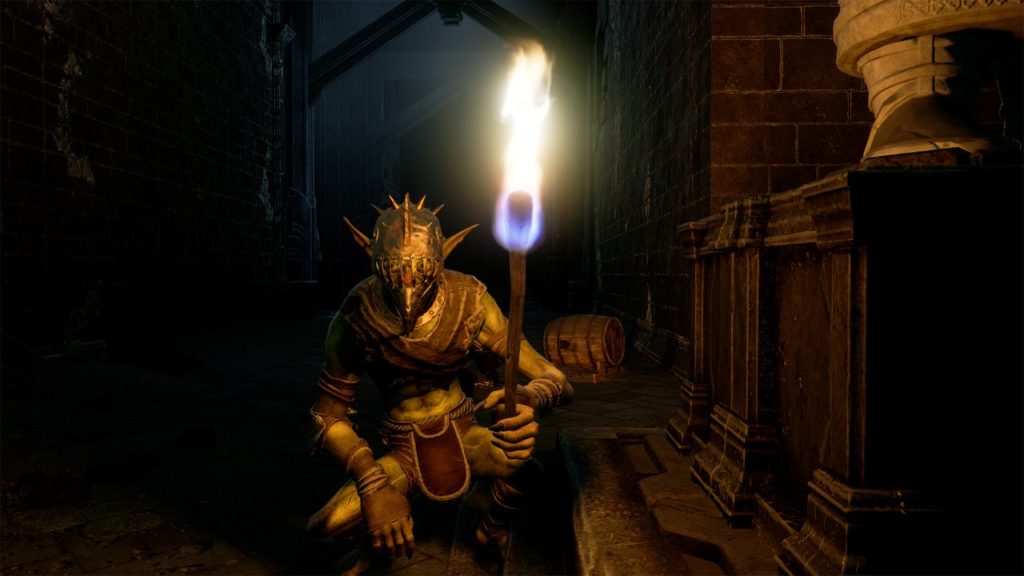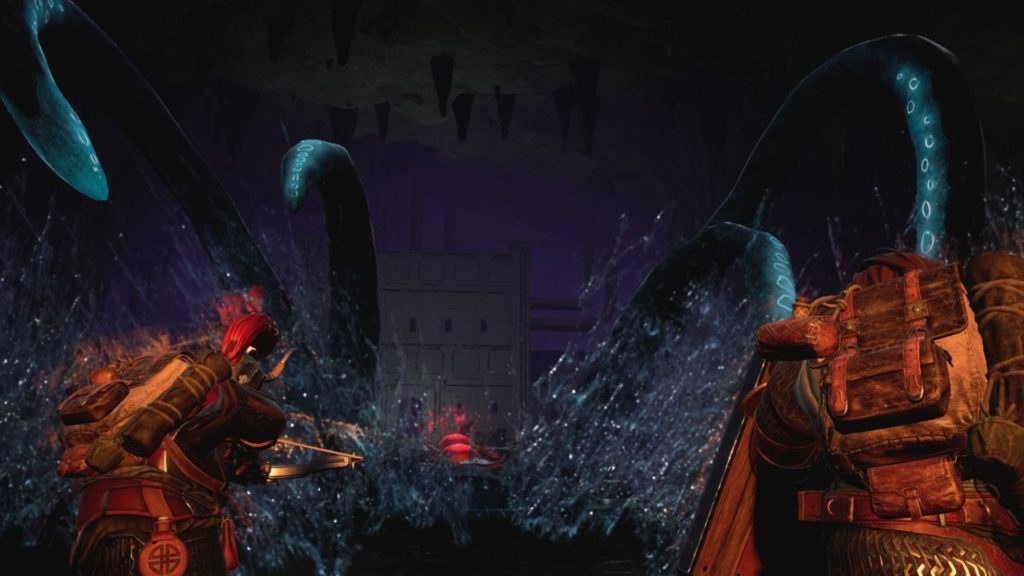24 October 2023
Despite lending itself to dozens of different genres at this point, one area rarely troubled by the Lord of the Rings branding is the survival game. Usually more easily associated with action-adventures or RPGs, Tolkien’s sprawling universe doesn’t at first seem suited to the concept of scratching around in the woods, making tools from sticks and stones. This is, after all, a world filled with magical and fantastical creatures, ancient wizards, powerful Dark Lords and daring heroes. Which might be one of the reasons why The Lord of the Rings: Return to Moria struggles to do anything truly interesting with the genre.
It’s a survival-crafting game set some years after the events of the original trilogy, and sees Gimli, Son of Gloin (here voiced once more by the excellent John Rhys-Davies) attempting to reclaim the legendary Dwarven homeland of Kazad-Dum by ridding the Mines of Moria of pesky orcs and goblins – among other things.
You don’t actually play as Gimli, however, and he’s only really around for the beginning. Instead, you play as a Dwarf of your own creation, who gets separated from the main expedition and must rebuild campsites, forges, hearths and workshops scattered throughout the mines. You must collect materials, find ideal spots for bases, and slowly inch your way deeper and deeper into the mountain.

One of the primary selling points here is that you’re able to mine directly through certain walls. This will give you stone and other materials with which to craft, as well as open up pathways to new areas of the mines. It is quite relaxing to smash through sheer rock walls as your Dwarf (or Dwarves, if you’re playing with friends) sings along to ancient ditties, some of which will be recognisable to fans of the books, movies, and extended lore.
In fact quite a lot of Return to Moria will be recognisable to fans – and not only of the books, but of the movies too, as several areas are directly recreated based on imagery from Peter Jackson’s trilogy. Unfortunately, Return to Moria seems to be hellbent on restricting everything you do, perhaps partly as a means to make sure you lay eyes on every single one of its many Easter eggs and nods to the broader universe.
For example, you can mine rock, but only where the game allows. No digging a trench for cover or making a shortcut to and from your immediate base. And I say immediate base because the gameplay loop involves gathering resources to build a base, using the base to craft new gear and provisions, then moving on to repeat the process with the next area – and while there are some lovely sights to see (the Elven Quarter is particularly lovely and made me wish I could stay there forever among the trees and finery), you won’t be anywhere forever.

Which is fine, I suppose, as it means you’ll get a change of pace and scenery now and then – but the way in which you build those bases is also restrictive. You can certainly opt to plonk a new forge or hearth wherever you like, but it’s cheaper and easier to use the foundations already provided in each new area. I struggled to find anywhere to build that was better than the areas the game provided for any reason beyond stubbornness.
Also, while the minute-to-minute survival gameplay is enough to keep you grinding, it’s pretty dull on your own. With mates you can brave the dangers of the dark together, or just go back to camp and get drunk and sing songs. On your own, Return to Moria is almost aggressively average. It’s a perfectly serviceable survival game, but it has very few fresh ideas that aren’t also irritatingly underdeveloped. Compared to other survival games such as Enshrouded (which offers more even in its demo form), Return to Moria struggles to impress.
Combat, too, is a chore. Enemies have little in the way of AI, and will simply just come at you regardless of terrain or numbers. You won’t find or craft anything particularly cool or unique either, so you’ll mostly be hacking away with swords and axes or, if you like, sniping from a distance with a bow and arrow. This is fine, but combat is imprecise and floaty, and if your enemy decides to run away (the rats in the starting area are notorious for it), chasing them down is hard work.

It’s not helped by some strange technical issues. They’ll almost certainly be patched to an extent in the future, but right now it’s just a very buggy experience. Enemy AI notwithstanding, I was constantly clipping through the environment or noticing popping textures and flickering lighting, and more than once I mined through a wall that didn’t disappear for some time afterwards.
That said, the biggest issue I have with The Lord of the Rings: Return to Moria is that it’s just not currently much fun. Though you’ll definitely have a better time with others, it never becomes much more than just okay. It doesn’t do an awful lot “wrong”, besides the combat, but it all just feels incredibly uninspired. If you’re a fan of the universe then it’s a reason to immerse yourself once more in familiar sights and sounds, but for anyone else it’s just another standard survival game that you’ve almost certainly played a better example of elsewhere.
Lots of nods for Tolkien fans
Some areas look nice
Buggy performance
Bad enemy AI
Imprecise combat
Adds nothing to the genre
If you’re a fan of the universe, Return to Moria is a reason to re-immerse yourself in familiar sights and sounds, but for anyone else it’s just another survival game.





